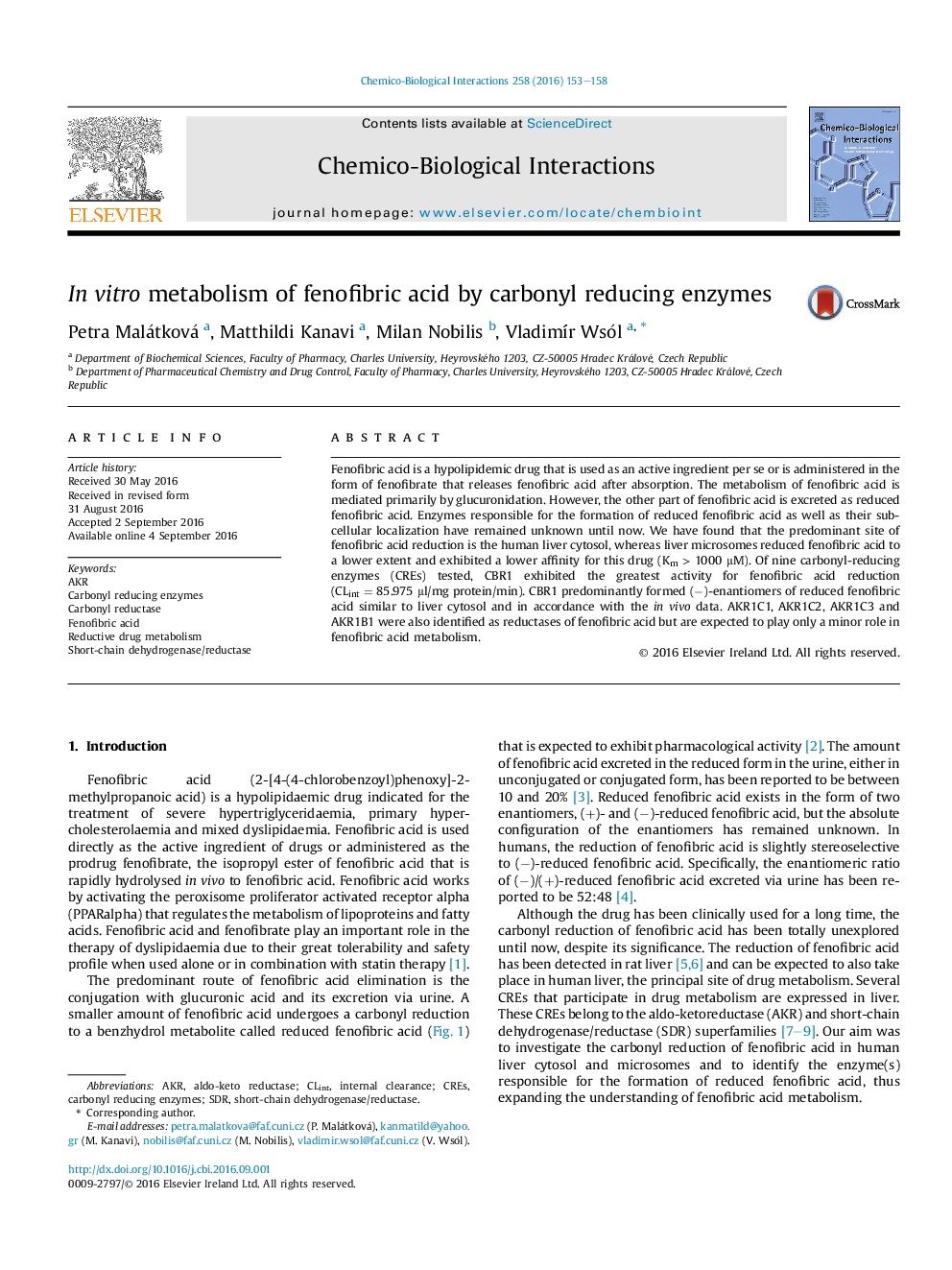| کد مقاله | کد نشریه | سال انتشار | مقاله انگلیسی | نسخه تمام متن |
|---|---|---|---|---|
| 2579782 | 1561583 | 2016 | 6 صفحه PDF | دانلود رایگان |
• The reduction of fenofibric acid, the active moiety of fenofibrate, was studied.
• Five recombinant carbonyl reducing enzymes were shown to reduce fenofibric acid.
• The highest activity was exhibited by CBR1.
• The stereospecificity of CBR1 highly resembled that of the human liver cytosol.
Fenofibric acid is a hypolipidemic drug that is used as an active ingredient per se or is administered in the form of fenofibrate that releases fenofibric acid after absorption. The metabolism of fenofibric acid is mediated primarily by glucuronidation. However, the other part of fenofibric acid is excreted as reduced fenofibric acid. Enzymes responsible for the formation of reduced fenofibric acid as well as their subcellular localization have remained unknown until now. We have found that the predominant site of fenofibric acid reduction is the human liver cytosol, whereas liver microsomes reduced fenofibric acid to a lower extent and exhibited a lower affinity for this drug (Km > 1000 μM). Of nine carbonyl-reducing enzymes (CREs) tested, CBR1 exhibited the greatest activity for fenofibric acid reduction (CLint = 85.975 μl/mg protein/min). CBR1 predominantly formed (−)-enantiomers of reduced fenofibric acid similar to liver cytosol and in accordance with the in vivo data. AKR1C1, AKR1C2, AKR1C3 and AKR1B1 were also identified as reductases of fenofibric acid but are expected to play only a minor role in fenofibric acid metabolism.
Journal: Chemico-Biological Interactions - Volume 258, 25 October 2016, Pages 153–158
